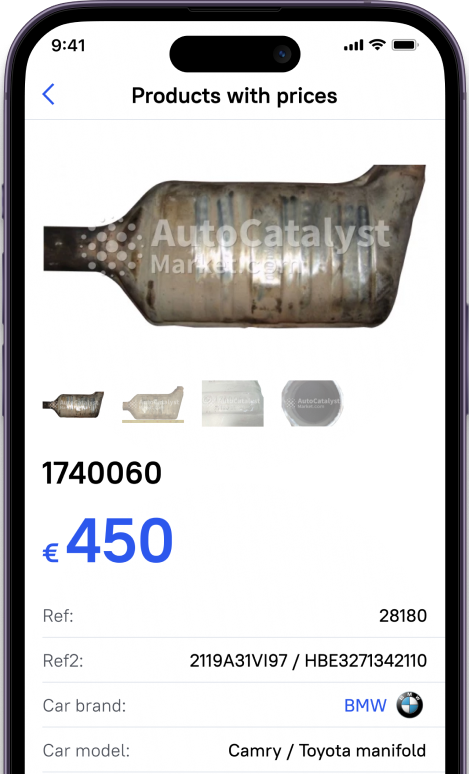Blog AutoCatalystMarket: Car Catalytic Converter & Recycling Market News, Useful Tips & Guides

Best Compact SUVs
Jul 17, 2025
Compact SUVs are the most popular vehicle on the market rn, especially in America and it is easy to see why. Fitting in between standard-size trucks and full-size SUVs these smaller models have plenty...

How much does a catalytic converter cost in Nigeria and why it’s expensive
Jul 17, 2025
In the context of contemporary automobiles, the catalytst assumes a pivotal role, countering the adverse effects of exhaust emissions on the environment through filtration. However, akin to all mechan...

How much does a catalytic converter cost in South Africa and why it’s expensive
Jul 17, 2025
In the realm of modern automobiles, the catalytic converter (catalyst) emerges as an indispensable guardian against the environmental havoc wreaked by exhaust emissions. Yet, like all mechanical marve...

How much does a catalytic converter cost in Saudi Arabia and why it’s expensive
Jul 17, 2025
The catalytic converter (catalyst) plays a pivotal role in the world of modern automobiles, actively combatting the detrimental impact of exhaust emissions on the environment through meticulous purifi...

How much does a catalytic converter cost in the UAE and why it’s expensive
Jul 17, 2025
Within the domain of modern automobiles, the catalytic converter assumes a pivotal role, dedicated to mitigating the harmful effects of exhaust emissions on the environment by means of thorough purifi...
Popular articles

What are the symptoms of a damaged catalytic converter?
Jul 16, 2025
Since there are no moving parts on a catalytic converter, you would expect that they would be fairly durable and long-lasting. They are but, in spite of all the advancements in catalytic converter tec...

Can catalytic converter be cleaned?
Jul 15, 2025
To neutralize toxic gases emitted from an internal combustion engine, a catalytic converter is installed in a car. Catalyst Is located at the outlet of the exhaust manifold. Although the service life...

How important is the catalyst in a car?
Jul 16, 2025
Understanding the vital role of catalysts
In Europe, obligation to equip all cars with a catalytic converter appeared back in mid-1990s. The USA started using catalysts much earlier, having realized...
All articles

How much does a catalytic converter cost in Egypt and why it’s expensive
Jul 17, 2025
Within the realm of modern automobiles, the catalytic converter assumes a pivotal role, serving as a vital line of defense against the adverse effects of exhaust emissions on the environment, accompli...

How much does a catalytic converter cost in Cameroon and why it’s expensive
Jul 17, 2025
Within the domain of contemporary automobiles, the catalytic converter occupies a pivotal role, in combating the adverse impact of exhaust emissions on the environment through thorough purification. N...

How much does a catalytic converter cost in Kenya and why it’s expensive
Jul 17, 2025
In the realm of modern automobiles, the catalyst (catalytic converter) assumes a pivotal role, combating harmful exhaust emissions to safeguard the environment through purification. Yet, like any auto...

Regeneration of DPF (Diesel Particulate Filter)
Jul 17, 2025
Problems with the DPF
In the world today, there are numerous diverse models of catalytic converters and filters installed in vehicles, and over the years, they undoubtedly become significantly bette...

Why Remove the Catalytic Converter?
Jul 17, 2025
Reasons Why the Catalyst May Be Malfunctioning
People understand that many parts in a car wear out over time, but it's not entirely clear what to do in case of a breakdown and who to turn to in suc...

The Rise of Three-Way Catalytic Converters (TWC) in Vehicles
Jul 17, 2025
Unveiling the Power of Three-Way Catalytic Converters: A Game-Changer in Automotive Technology
Cleaning systems are constantly updated and evolving, and due to strict environmental regulations, manuf...
Download AutoCatalystMarket
Uncover the real worth of your scrap catalytic converters!




